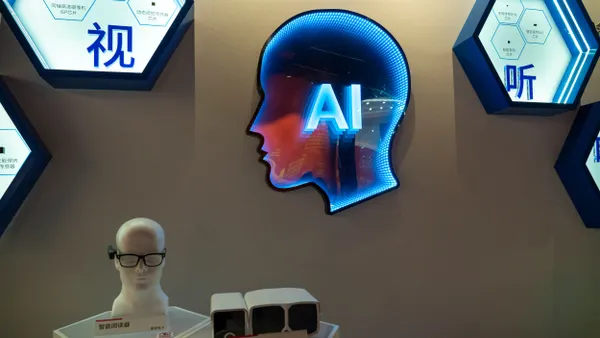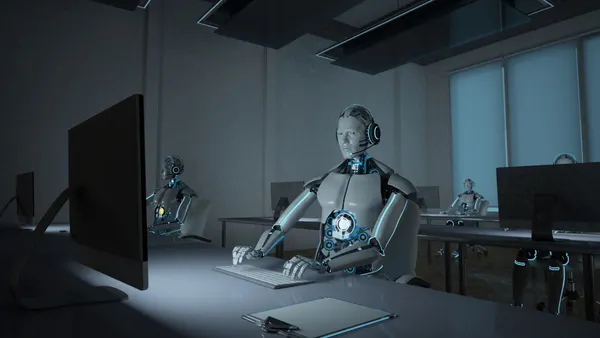Dive Brief:
- Technology will replace fewer future manufacturing jobs than in the previous decade and redefine, rather than eliminate, industry jobs, according to a new ABI Research study. This means that artificial intelligence (AI), robotics and machine learning will require that manufacturers adapt to the change through retraining and upskilling their employees.
- ABI Research, including a B2B survey of 455 American companies, found that 67% of manufacturing respondents said they didn't have internet of things (IoT) solutions in place for meeting the technology transformation, and of that number, 74% were evaluating, investigating or planning to leverage IoT in the next 12 months. According to ABI, Industrial IoT tends to be automation enabled, with 35% of respondents assessing AI and 47% having deployed or in review of robotics.
- Some examples of companies that have adopted technology without massive job replacements, according to ABI, include Amazon, whose robotics in its fulfillment centers have resulted in enough efficiency for it to hire more workers; and Walmart, whose shelf-scanning technology frees up employees so they can focus on customers.
Dive Insight:
Reports of manufacturing jobs on the decline have defined the industry for a decade or more. However, predictions about automation's impact go back and forth depending on study. While one study claims the retail industry may lose 7.5 million jobs to automation, others say that employees will soon work in a world right alongside their "co-bots." In a tight labor market with low unemployment, this is good news for the industry. However, manufacturers will need to focus on retraining and reskilling their labor force for future work, especially as the influx of bots change the very nature of the work humans need to do.
A perhaps more pressing issue is the coming "perfect storm" of automation, income inequality and an aging workforce that could create serious worker displacement and market disruption, Bain & Company said in a study. For this reason, employers must be sure they consider the needs of a five-generation workforce even as they wrestle with automation.











